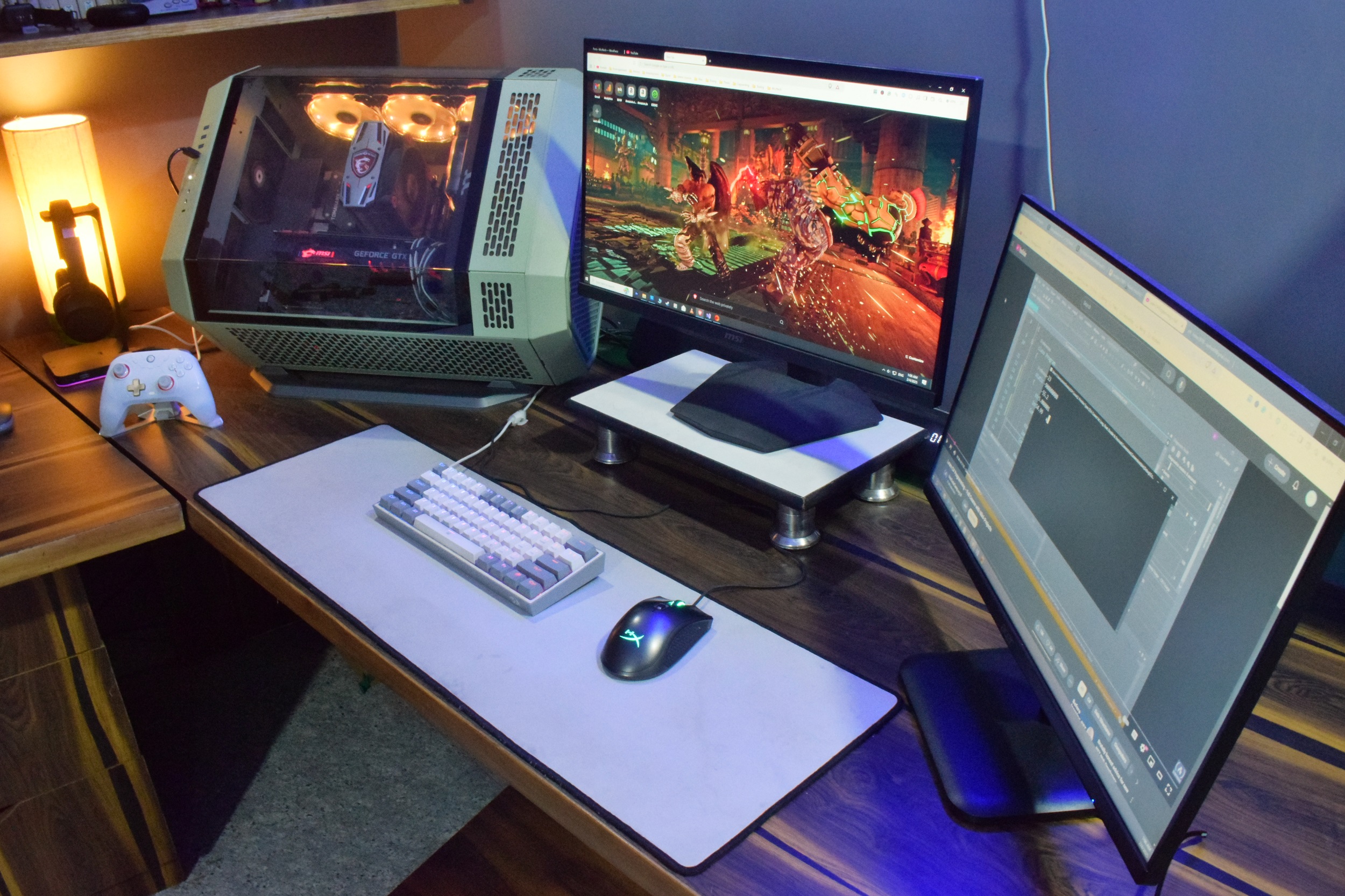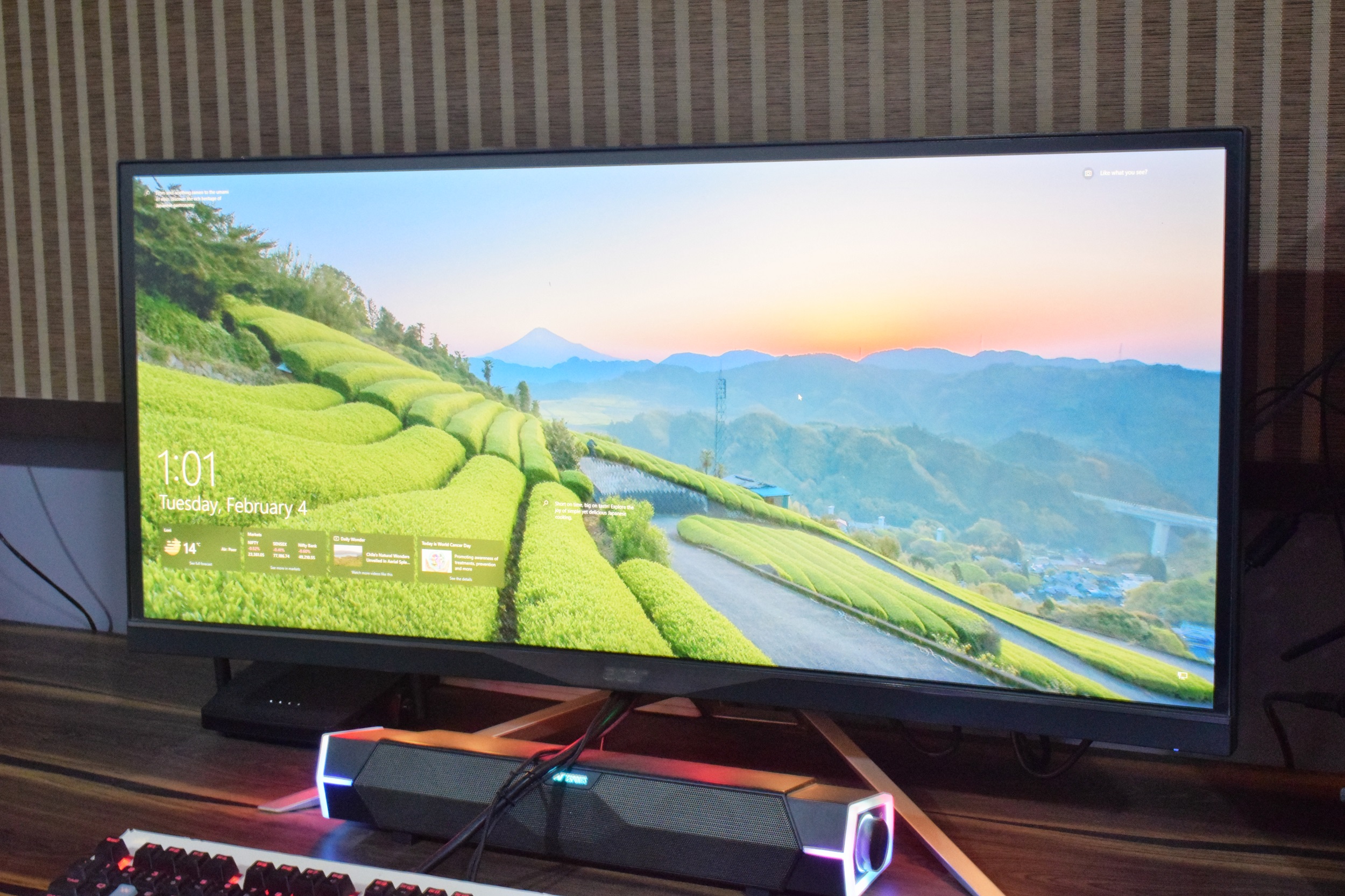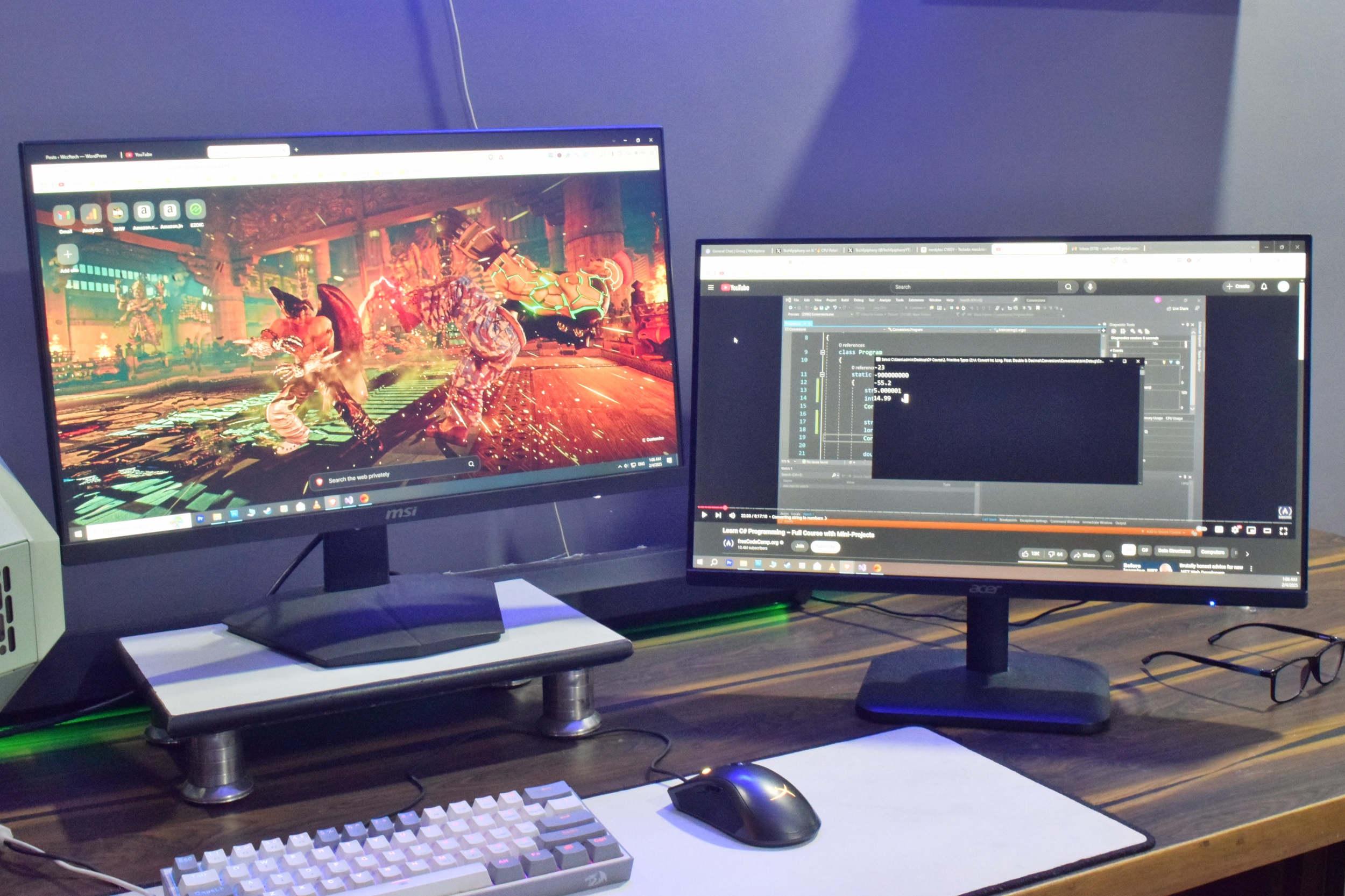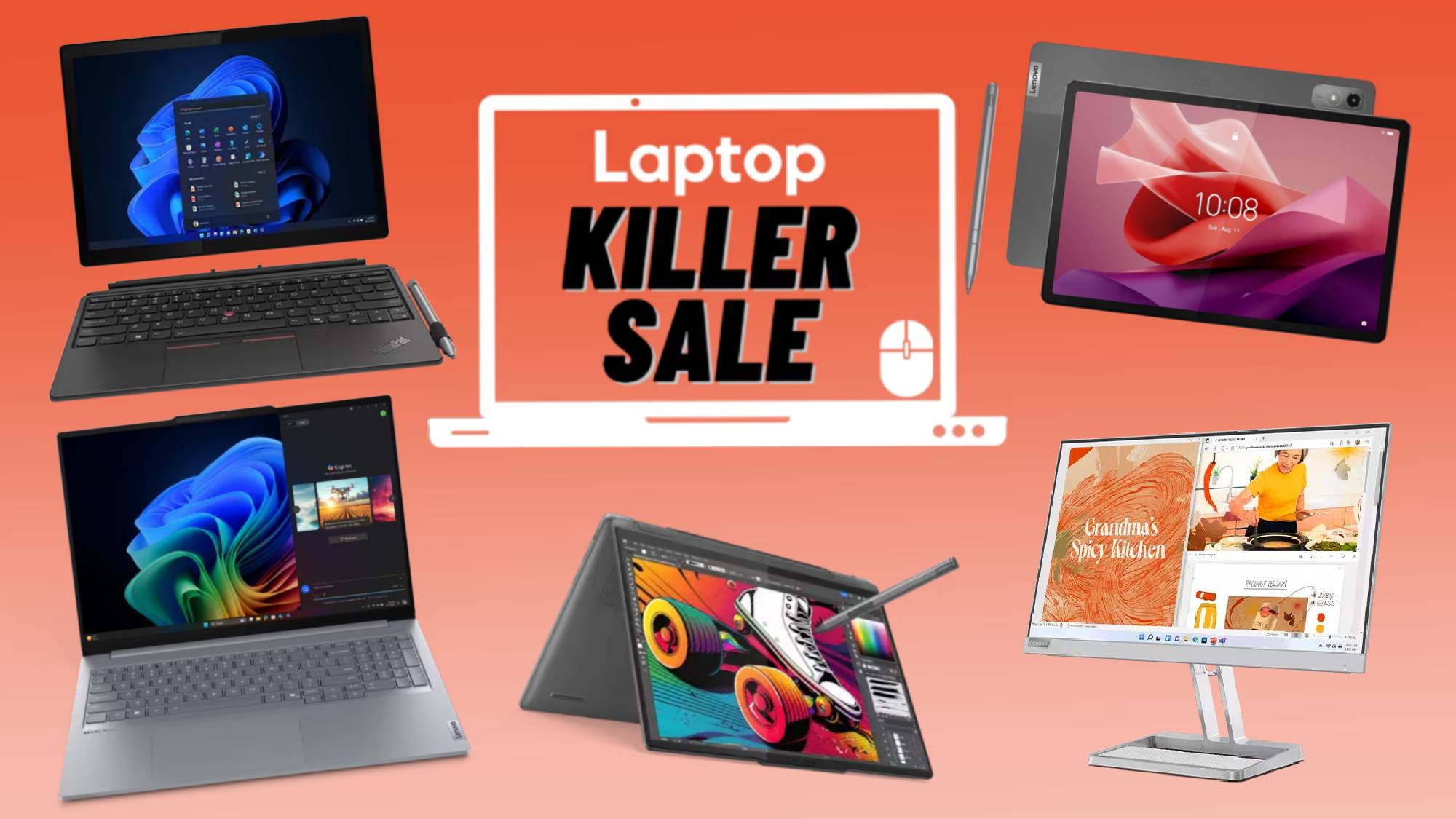I downgraded from a 1440p to a 1080p monitor — here's what happened
Here is why 1080p still rocks, why I stepped down from 1440p, and why it might also be practical for you.

It might sound weird to downgrade your monitor, but hear me out.
1080p isn’t going anywhere soon.
Even as monitor makers are rapidly growing their inventory with better and higher-quality panels, it might be right for you. After all, the monitor market is no longer limited to screen sizes; it has introduced ground-breaking technologies in recent years, which have changed the viewing experience forever.
The displays will continue to evolve, but that can’t be said about their mass adoption. Although 4K resolution appeared more than a decade ago, most consumers had difficulty transitioning from 1080p to 1440p, let alone 4K.
Sure, more customers are adopting higher resolutions every year, but 1080p isn’t going anywhere soon. With a steady 20%+ share in the desktop market in the last five years, it’s hard to deny that.
Here is why 1080p — which first debuted on monitors nearly 30 years ago — still rocks, why I stepped down from 1440p, and why it might also be practical for you.
It is a difficult choice at first, but it can make a huge difference

After using 1080p monitors for several years, I switched to 1440p a few years ago and tried UWQHD displays. The experience was immersive, and I loved the extra details in my games. I tried newer monitors as the years passed but never considered returning them to 1080p simply because it felt illogical.
That’s where I was wrong.
Stay in the know with Laptop Mag
Get our in-depth reviews, helpful tips, great deals, and the biggest news stories delivered to your inbox.
Unlike a CPU or a GPU, downgrading a monitor can be beneficial in specific ways that might not be visible initially.
From price to power consumption to certain visual technologies, there are many areas where a 1080p monitor excels, which is why I found it convenient for my setup.
My PC is no longer stressed and can keep up with modern games

Higher resolutions are demanding, and with titles such as Stalker 2, Spider-Man 2, God of War: Ragnarok, and similar intensive titles, it can be challenging for your CPU/GPU to keep up with the requirements to push the frame rates beyond 60. Since most enthusiasts choose 144 Hz, 240 Hz, or even higher refresh rate panels, 1440p and 4K resolutions can strain your GPU to the point where it will struggle to maintain a higher fps number.
Since my configuration, comprising Ryzen 1700X and GTX 1080 Ti is a bit old, my PC starts to cry when running modern titles at 1440p. One solution was to upgrade my system every few years (much more expensive), while the other was to simply opt for a cheaper solution, i.e., a 1080p monitor. I went with the latter, and thankfully, I can still run these modern titles with close to 60 fps in most circumstances.
Of course, there are still a few compromises here and there, but it couldn’t have been possible on my previous 1440p and UWQHD monitors. I am not saying that I liked the reduction in visual details, but when you reduce your resolution, you typically also reduce the screen size. This makes the smaller resolution feature an equivalent PPI (Pixels Per Inch), ensuring the visuals are still sharp.
1080p monitors are surely smaller, but think of the possibilities

Going compact has lots of benefits, and it is much easier for me to manage a dual or triple monitor setup. I use two 24-inch monitors for my work and gaming, and if I ever wanted to do a triple monitor setup on a monitor stand with three arms, it would require much less space than 27-inch or bigger screen displays. Not to mention, smaller monitors also offer better portability and can be handled easily.
One of the smaller yet effective benefits of using a 24-inch monitor is the appropriate distance between my monitor and myself. My desk measures approximately 30 inches in width, which makes 27 and 32-inch monitors quite overwhelming at this distance.
On the contrary, I have an easier time seeing everything at a glance on my 24-inch monitor, grasping as much content as possible without shifting my eyes too much. As most desks are 30 inches or less in width, a 1080p monitor with a 24-inch display is more appropriate than bigger screens.
My setup generates overall less electricity bill
My 1080p monitor is already several times more efficient than my 1440p monitors.
Considering that their core specs are similar, there isn’t a massive difference in power consumption between a 24-inch and a 27-inch monitor. Still, a smaller monitor can greatly affect your setup's overall power consumption.
Typically, 1080p monitors consume between 20-30W or more, depending on the brightness and active technologies. 1440p monitors can consume over 50W, while an ultra-wide QHD monitor like mine can consume up to 100W at peak.
My 1080p monitor is already several times more efficient than my 1440p monitors. Still, apart from its lower power consumption, my setup consumes less power because it is not always pushed to 100% usage, depending on the workload.
While this can vary from application to application and game to game, 1080p monitors are generally generous on your GPUs, allowing you to max out the fps without forcing your GPU to 100% usage in all the games. However, this isn’t the exact case in modern intensive titles. However, there is still a noticeable difference in overall power consumption that does save you some cash on electricity bills over time. In regions like the EU, electricity is a much more significant concern, as it is much more expensive than in some countries on the Asian continent.
Smoother visuals on a budget
It’s already obvious that my system (and yours) can perform much better at 1080p than at 1440p. This makes it easier for my rig to hit the 100+ fps mark in various titles and even higher in specific eSports titles like CS2 and Valorant. It also allows me to enjoy my monitor's incredible smoothness, as hitting that performance level at 1440p is difficult, leaving my monitor’s potential unused.
It’s great that we now have 1440p 500Hz gaming monitors, but good luck hitting 500 FPS at that resolution. Even if you opt for a slightly lower (but still incredibly high) refresh rate monitor, like 240 Hz or 360 Hz, I can’t guarantee that you can reach those numbers in most titles, even if you own a high-end rig.
On the flip side, you can likely reach 240 Fps or even 360 Fps at 1080p, even in triple-A titles, assuming you don’t mind turning on DLSS Frame Generation or similar technologies. However, reaching that number natively is also possible in non-intensive titles if you own a powerful gaming rig.
Unsurprisingly, most professional eSports players still go for 1080p resolution because it offers ultimate smooth gameplay that helps them easily secure wins. Even if you aren’t a professional player like me, you will enjoy CS and Valorant more at 1080p than on higher resolutions.
1080p is still the best choice for content consumption and streaming
With 1080p being the most popular desktop PC resolution, I find it more convenient than 1440p for content creation and streaming. Capturing my favorite gaming moments now takes less space on my drive, and sharing them is also faster. Apart from recording my gaming footage, I find 1080p content more accessible and well-optimized online. This includes gaming and streaming services like Netflix, Hulu, and Amazon Prime.
It is also way better for gaming live streamers, as 1080p content requires less bandwidth. The consistent visual quality ensures that the final result looks exactly as the creators intended, with minimal distortion. Even though I am not a professional streamer, I still love watching live streams and gameplay from my favorite YouTubers.
More from Laptop Mag
- The world's first 750Hz gaming monitor is coming to CES 2025 — how fast is too fast?
- This new bendable LG gaming monitor is flexible in more ways than one
- I use these unique monitors to boost my productivity at home and on the go
- Sony's first-ever OLED Inzone monitor has an ultra-fast refresh rate that's designed to make you an esports god

You must confirm your public display name before commenting
Please logout and then login again, you will then be prompted to enter your display name.
